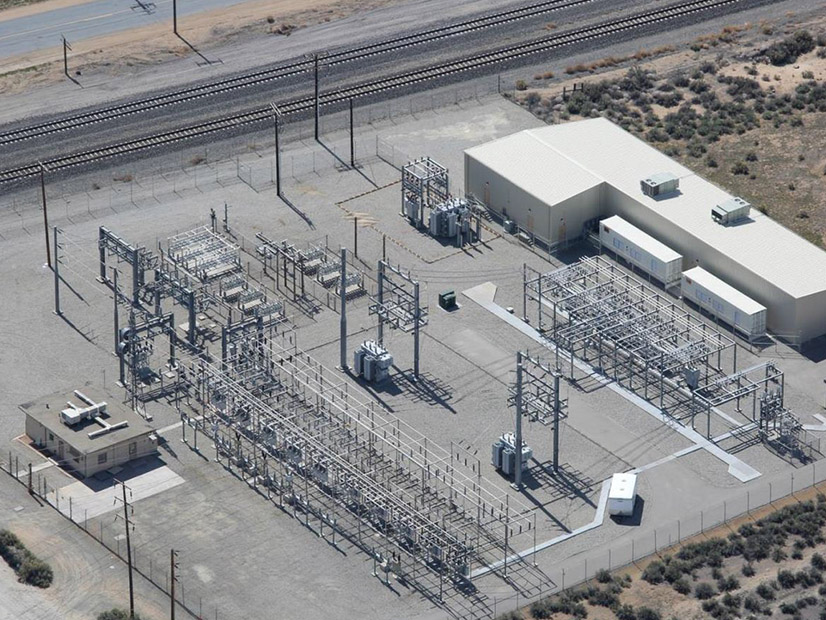FERC on July 31 accepted CAISO’s proposal to allow for storage resources to bid above the ISO’s $1,000/MWh soft offer cap in the real-time market to account for their intraday opportunity costs (ER24-2168).
The approved tariff revisions also remove the requirement that scheduling coordinators submit reference level adjustment requests (RLCR) to raise their default energy bids (DEBs) above $1,000/MWh when their DEBs would, by their own calculations, rise above $1,000/MWh.
The proposal is the result of work by CAISO’s Price Formation Enhancements Working Group and the Storage Bid Cost Recovery and Default Energy Bids initiative. It revises the process under FERC Order 831 by which the ISO verifies a unit’s cost-based offers in the energy market. (See CAISO Moves for Expedited Change to Soft Offer Cap.)
Issued in 2016, Order 831 set a “soft” cap on energy bids of $1,000 that could be exceeded, up to a “hard” cap of $2,000, to reflect a resource’s verifiable costs. Each grid operator was required to propose a process for verifying offers over the soft cap.
CAISO, however, found that the new paradigm, approved in 2020, inhibited storage and hydroelectric resources, two types vital to maintaining adequate supply during the summer.
“For resources that operate based on finite resources like reservoir levels or state-of-charge, supplying energy earlier in the day often means that they cannot supply energy later at the time of higher demand,” FERC said in its order. “CAISO states that this is a significant concern because if these resources are depleted earlier in the day, CAISO must depend on a more limited pool of resources to meet its later net peak demand.”
Removing the RLCR restriction will enable cost-justified bidding, promoting more efficient dispatch on constrained days, FERC said. “The artificial restriction to cap DEBs at $1,000/MWh is unnecessary and counterproductive to using DEBs for cost-verification.”
CAISO’s Department of Market Monitoring agreed, having argued that requiring scheduling coordinators to submit RLCRs is unnecessary because the formulas used to calculate DEBs are well established and reflect the marginal cost of a resource. The department also agreed the cap should be removed for energy-limited resources because of the technical limitations they face. Portland General Electric and the California Energy Storage Alliance also supported the proposal.
While the DMM generally supported the tariff revisions, it also said the proposed changes should not apply to the entire day because a static bid cap cannot target specific hours when intraday opportunity costs are most likely to exceed $1,000/MWh.
The California Public Utilities Commission also argued that the proposed changes are not targeted enough to address the intraday opportunity costs of hydro resources. Lifting the cap in the day-ahead market is not necessary because the market is already able to optimize resource schedules, it said.
“DMM and CPUC assert that the bid cap proposed by CAISO would allow energy storage resources to bid substantially in excess of their intraday opportunity costs during high priced hours when the system is tight and the opportunity cost is known to approach zero,” FERC summarized.
The department also raised concerns about the tariff revisions’ potential to exacerbate existing flaws in bid cost recovery, an issue being addressed in the ISO’s bid cost recovery initiative. (See CAISO Kicks Off Storage Bid Cost Recovery Stakeholder Initiative.)
The CPUC also argued that the hydro DEB formula was not designed for above-cap bidding and therefore does not result in values that satisfy Order 831 cost justification requirements.
CAISO responded by reiterating its belief that artificially capping any resource’s DEB at $1,000/MWh in the day-ahead market could lead to inefficient scheduling. CPUC’s arguments regarding the hydro DEB formula were outside the scope of the proceeding, the ISO argued, and neither it nor the DMM provided evidence that proposing a static bid cap throughout the day rather than targeting specific hours was unreasonable.
FERC disagreed with the DMM’s and CPUC’s arguments.
“We find that CAISO’s proposal will help to ensure that energy-limited resources are able to reflect their opportunity costs in their cost verified bids, similar to other resources,” FERC stated. “We find that accounting for these opportunity costs will enable CAISO to more optimally manage these resources’ energy limitations over the day, and thereby improve CAISO’s ability to reliably and economically meet its net peak demand.”
The tariff revisions become effective Aug. 1. Commissioners Lindsay See and Judy Chang did not participate in the order.


